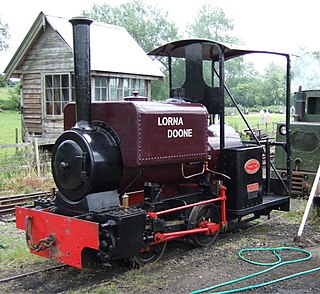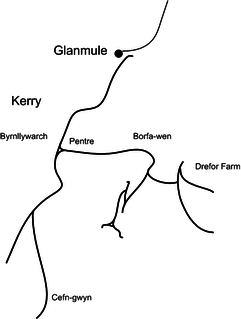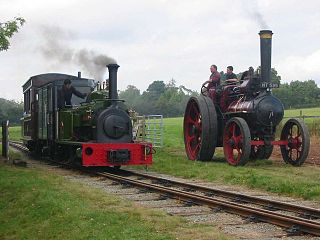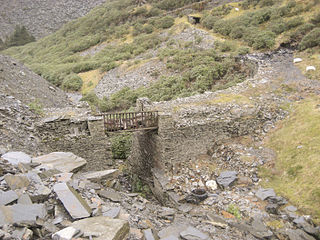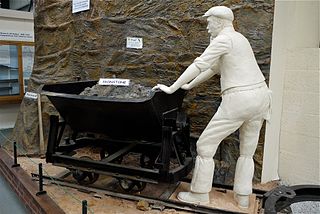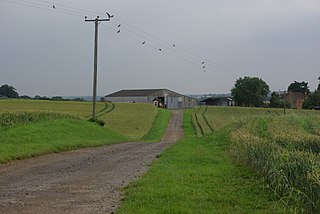| Locale | England |
|---|---|
| Dates of operation | 1889–1949 |
| Successor | Abandoned |
| Track gauge | 3 ft (914 mm) |
| Length | 1½ miles |
| Headquarters | Scropton |
The Scropton Tramway was a British industrial 3 ft (914 mm) narrow gauge railway connecting several gypsum mines with the North Staffordshire Railway station at Scropton in Staffordshire. It was also used to transport munitions during World War II.

An industrial railway is a type of railway that is not available for public transportation and is used exclusively to serve a particular industrial, logistics or a military site. In regions of the world influenced by British Railway culture and management practices, they are often referred to as tramways. Industrial railways may be connecting the site to public freight networks through sidings, isolated or located entirely within a served property.

Three foot gauge railways have a track gauge of 3 ft or 1 yard. This gauge is a narrow gauge and is generally found throughout North, Central, and South America. In Ireland, many secondary and industrial lines were built to 3 ft gauge, and it is the dominant gauge on the Isle of Man, where it is known as the Manx Standard Gauge. Modern 3 ft gauge railways are most commonly found in isolated mountainous areas, on small islands, or in large-scale amusement parks and theme parks. This gauge is also popular in model railroading, and model prototypes of these railways have been made by several model train brands around the world, such as Accucraft Trains (US), Aristo-Craft Trains (US), Bachmann Industries, Delton Locomotive Works (US), LGB (Germany), and PIKO (Germany).

Gypsum is a soft sulfate mineral composed of calcium sulfate dihydrate, with the chemical formula CaSO4·2H2O. It is widely mined and is used as a fertilizer and as the main constituent in many forms of plaster, blackboard chalk and wallboard. A massive fine-grained white or lightly tinted variety of gypsum, called alabaster, has been used for sculpture by many cultures including Ancient Egypt, Mesopotamia, Ancient Rome, the Byzantine Empire and the Nottingham alabasters of Medieval England. Gypsum also crystallizes as beautiful translucent crystals of selenite (mineral). It also forms as an evaporite mineral and as a hydration product of anhydrite.

